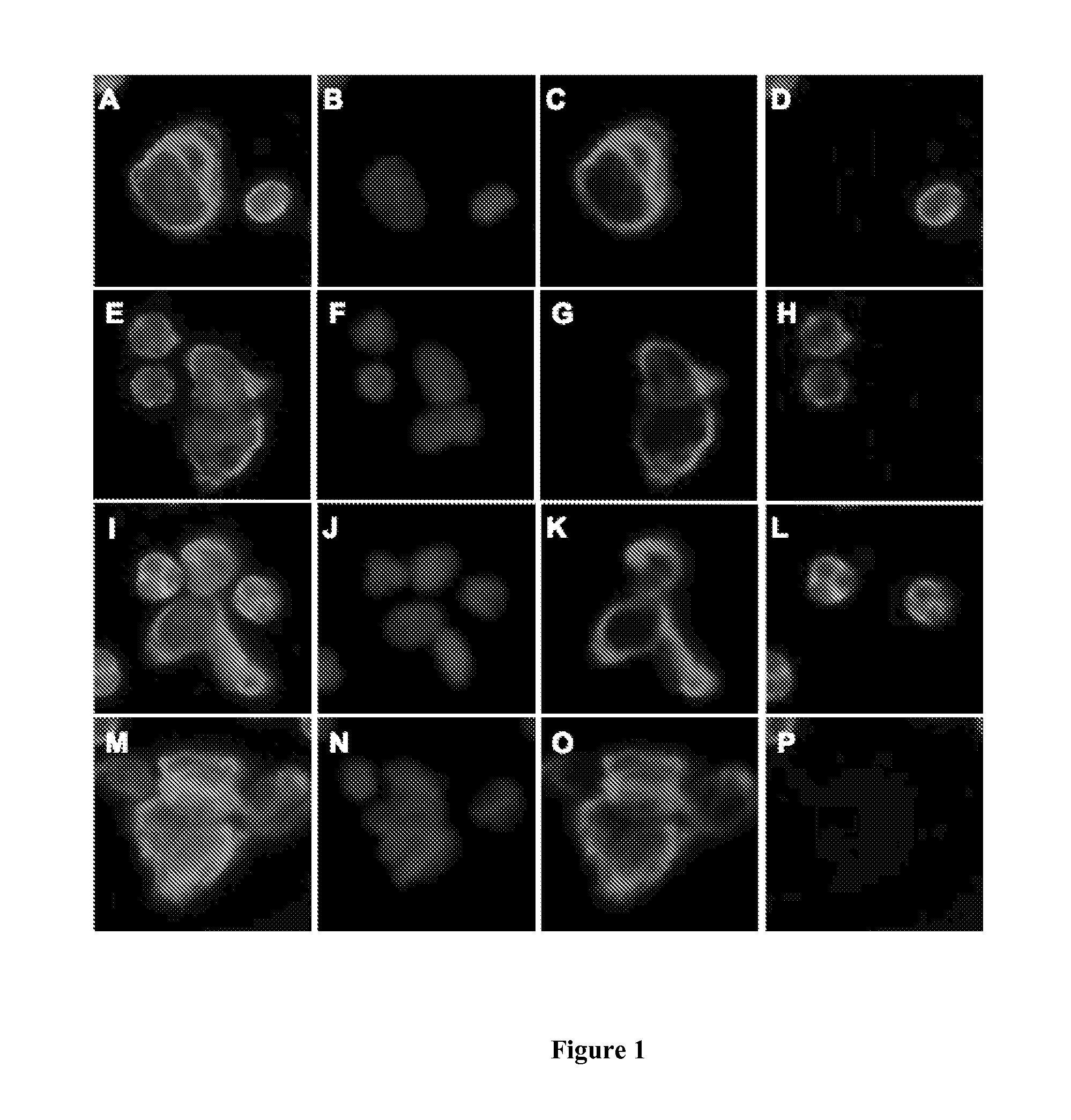Circulating tumor cell diagnostics for lung cancer
a technology of lung cancer and tumor cells, applied in the direction of biochemistry equipment and processes, instruments, therapies, etc., can solve the problems of unnecessary procedures resulting from a 96% false positive rate, approximating 30% of diagnoses, and affecting the quality of treatmen
- Summary
- Abstract
- Description
- Claims
- Application Information
AI Technical Summary
Benefits of technology
Problems solved by technology
Method used
Image
Examples
example 1
Integration of CTC Data with Clinical Information Enhances Diagnostic Accuracy for Patients Undergoing Evaluation for Lung Cancer
[0084]This Example confirms the utility CTCs as a viable diagnostic when added to integrated clinical and imaging data in early-stage disease, and further, developed a risk score for diagnosis of lung cancer.
[0085]This was a multicenter, prospective, observational study of CTCs in patients with a lung nodule or mass who were undergoing 18F-FDG PET-CT imaging for concern of lung cancer or staging of lung cancer by their referring physician. Patients were enrolled at three medical centers at or near to the time of PET-CT imaging after fully informed consent. Whole blood was collected through a peripheral, upper extremity vein after discarding the first one millileter to minimize skin tag contamination, and samples were shipped at ambient temperature and processed at The Scripps Research Institute (TSRI) within 48 hours. Prior to data analysis and integration...
PUM
| Property | Measurement | Unit |
|---|---|---|
| thickness | aaaaa | aaaaa |
| imaging | aaaaa | aaaaa |
| fluorescent scanning microscopy | aaaaa | aaaaa |
Abstract
Description
Claims
Application Information
 Login to View More
Login to View More - R&D
- Intellectual Property
- Life Sciences
- Materials
- Tech Scout
- Unparalleled Data Quality
- Higher Quality Content
- 60% Fewer Hallucinations
Browse by: Latest US Patents, China's latest patents, Technical Efficacy Thesaurus, Application Domain, Technology Topic, Popular Technical Reports.
© 2025 PatSnap. All rights reserved.Legal|Privacy policy|Modern Slavery Act Transparency Statement|Sitemap|About US| Contact US: help@patsnap.com



